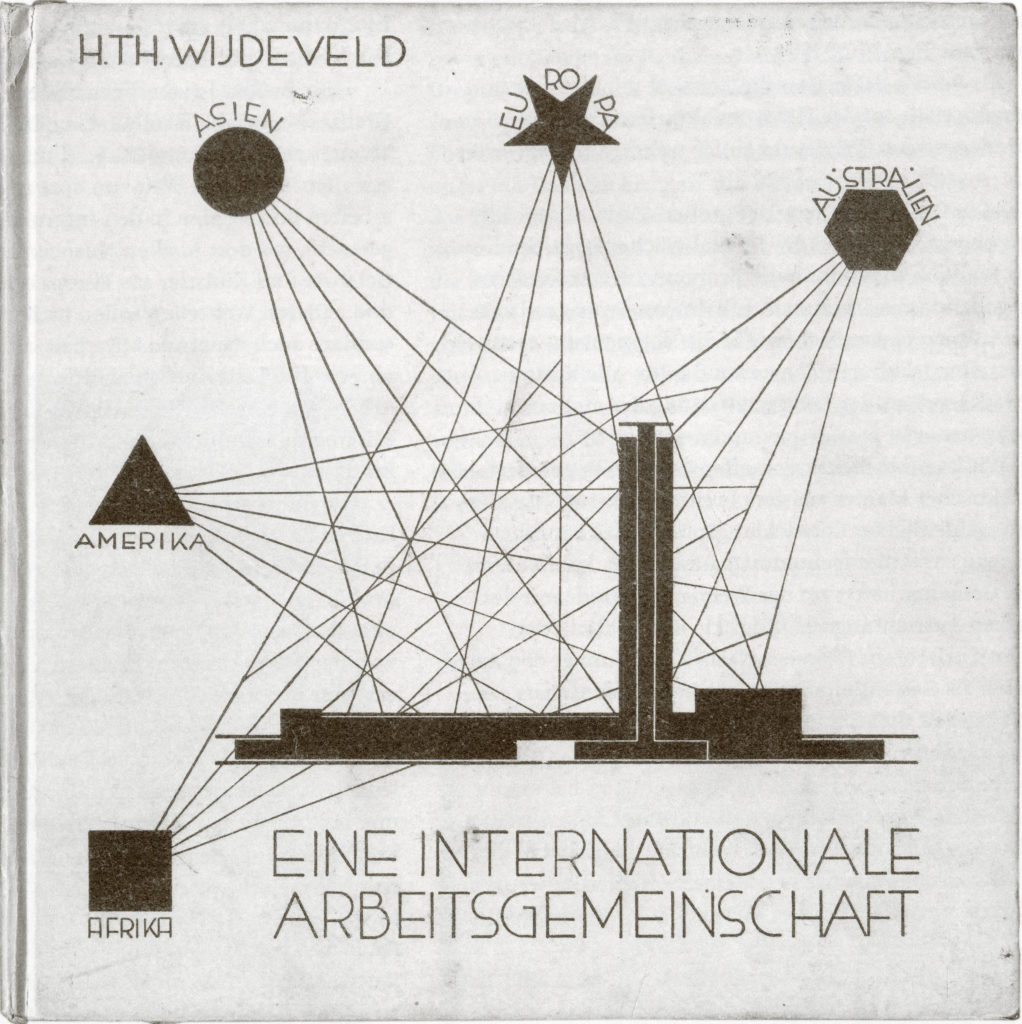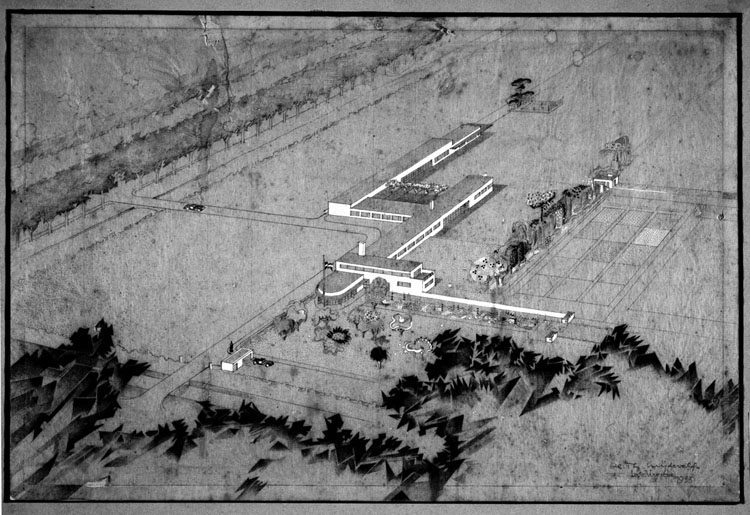Hendricus Theodorus Wijdeveld, known as an architect belonging to the Amsterdam school, a set designer and chief editor of the art magazine Wendingen, published his concept for an international working community, the ‘international werkgemeenschaap’, which he had pursued since the 1920s, in 1931. In it, he described a project that, inspired by the British Arts and Crafts movement’s guilds of craftsmen, included several Bauhaus-savy aspects. The plan was to create an institute in the Dutch arcadia of the Lakes of Loosdrecht, where teachers and students, architects, artists and artisans would live and work together. He summed up his holistic approach of interconnecting learning and life in the slogan ‘A Working Community. Not a School!’.
Alongside architecture as the parent discipline, he envisaged departments for metal, glass and woodwork as well as for ceramics, typography and textile engineering. Additional academic subjects and a demanding cultural programme were to be complemented by communal meals, sports and leisure activities and work on connected agricultural land. The architectonic plans included in the publication show a spectacular modern building complex which is captured in abstract form on the dynamic yellow and red cover. Reminiscent of a steamship, it rests on a global communication network that interconnects five continents. In terms of its programme, Wijdeveld places a focus – unlike the Bauhaus – on educating a multinational and polyglot community, its purpose being to stimulate creative energies.
Even though Wijdeveld believed the Netherlands played a leading role in the international discourse, his concept found greater resonance abroad than at home. Frank Lloyd Wright seized on key elements for his Taliesin Fellowship, and Erich Mendelsohn was able to get Wijdeveld on-side for a realisation of his concept on the French Riviera. Ultimately, Wijdeveld realised a modest version of his original plan for a “Dutch Bauhaus” near Hilversum. At his working community which opened under the name Elckerlyc (Everyman) in 1937, Wijdeveld taught architecture, stage design and exhibition design to a small group of students. His institute was closed down by the National Socialists in 1941.



